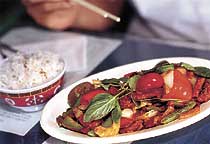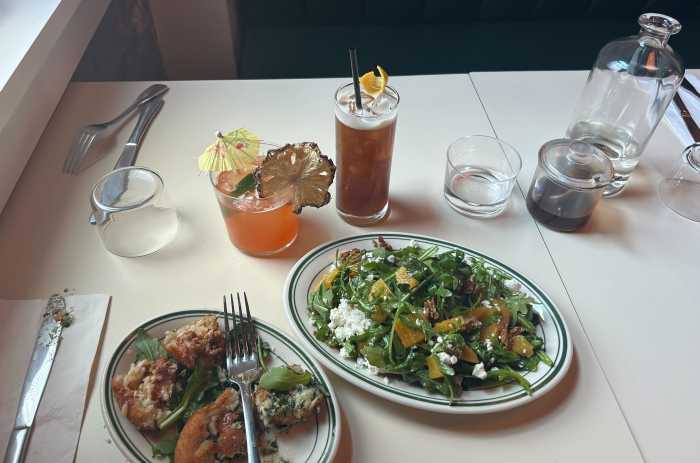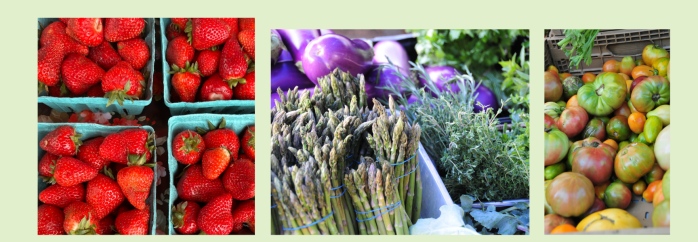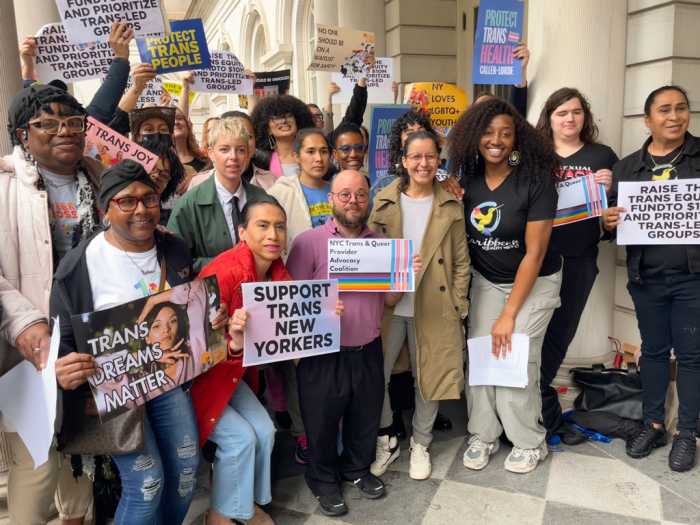Mrs. Deap’s day began at dawn when, after
a glass of tea, she rode a moped to the market for vegetables,
fish, squid, chicken and other ingredients she needed for the
day. She cooked for a dozen or more people in a house in Phnom
Penh, Cambodia, that summer day, including myself, a reporter
at The Cambodia Daily.
By 8 am, she would be hunkered down on the spotless kitchen floor,
the rough outlines of four or five recipes all within arm’s reach,
accompanied by a round, wooden cutting board and an outsized
mortar and pestle. Chopping, pounding, slicing, talking and tasting
occurred before anything reached the stove.
"Mahop Kampuchea," she would say to visitors to her
kitchen – "Cambodian food" – and extend a taste of
whatever she was making.
That’s how Jerry Ley remembers home cooking in Cambodia – as
a physical, immersing activity – and he has tried to bring the
results to New York. For eight years Ley has cooked a mix of
traditional Cambodian meals at Cambodian Cuisine in the heart
of Fort Greene at South Elliott Place and Lafayette Avenue, and
hedged his bets by offering the neighborhood a selection of standard
Chinese choices.
When Ley first opened he worried that customers wouldn’t take
to the tastes of his homeland. The menu was about half-and-half,
Cambodian and Chinese, he said.
"I was afraid I would fail in the business," he said.
In recent years Cambodian cooking has won over his customers.
Cambodian cuisine is less sweet than Thai, not as salty as Vietnamese,
and includes bits of cooking from India and Southeast Asia. Dishes
delicately balance divergent ingredients like mango, chili sauce,
lime juice, coconut milk and galangal – a pungent gingerroot.
The food at Cambodian Cuisine is not "pure Cambodian,"
Ley admits. The flavor of fish sauce (prahok) that goes into
many Cambodian dishes would be too much for his customers, he
said. So he tones the ingredients down. He uses less prahok,
and sticks to lemongrass, basil, kaffir lime and other foods
he picks up in Chinatown or the Cambodian market on Kingsbridge
Avenue in the Bronx during the course of his 16-hour workday.
A good starting example of the blend is naem chao, cold Cambodian
spring rolls filled with shrimp, shredded cucumber, carrots,
bean sprouts and sweet basil, dipped into a peanut sauce.
Among the dozens of entrees on Ley’s menu – ranging from Cambodia’s
ubiquitous prawhet (fish ball) soup to Mekong fish (fried whole
Tilapia, a mild, white fish, in a creamy hot chili sauce) – is
what some consider Cambodia’s national dish, ahmok. In Cambodia
ahmok is a fish dish, but Ley couldn’t find a muddy water fish
that pleased him, so he substitutes chicken into the elaborate
curry marinade of coconut milk, lemongrass, kaffir lime and red
chili. The blend of flavors is delicate and deceptively smooth.
Shrimp chahar meesoor may be more familiar. Sauteed shrimp stirred
into a generous plate of bean thread-noodles, tree ear, cabbage
and onion. The result is filling and with a taste similar to
moo-shoo.
Ley started by cooking for himself as a student when he lived
away from his home village Monkol Borei in Battambang province.
Ley was a 22-year-old freshman at the University of Phnom Penh,
studying engineering, and cooking was a way for students to save
money.
When the Khmer Rouge took Cambodia by force in 1975, they emptied
the cities and put the populace into forced labor camps tending
rice fields. Families, including Ley’s own, were separated. The
Khmer Rouge murdered the educated, or anyone who appeared to
be. People threw away their eyeglasses to save their lives. It
is estimated that nearly 2 million Cambodians died by starvation,
malnutrition or execution in the killing fields under the Khmer
Rouge regime.
Ley survived the four years by pretending to be someone else.
"I have to be honest," Ley says – as a preface to most
of his thoughts. "I hid my identity. I had to hide my background.
I had to learn to talk stupid," he said. "If they knew
my background, definitely," – he snaps his fingers – "just
like that."
When Vietnam invaded Cambodia in 1979 and drove the Khmer Rouge
from power, many Cambodians, Ley among them, fled the country.
He made his way to New York, where one of his brothers had lived
since the 1950s. A series of restaurant jobs eventually led to
his decision to go into business for himself.
"In the Khmer Rouge I was just afraid of one thing, that
I would be killed," Ley said. "I didn’t think about
anything else."
Running a restaurant brought a host of lesser worries he was
unprepared for – how to start a new life, keep accounts, shop
for ingredients, cook meals and make sure the customers were
gently introduced to Cambodian cuisine.
Before Ley left Cambodia, restaurant dining meant going out for
Chinese or French food. The national foods were, and still largely
are, the product of home cooking rather than restaurants.
"Why would you eat in a restaurant when you can get just
as good or better at home?" Ley said. "People want
to eat something different when they go out."
"Most of the dishes I have are from my mother," he
said. "I prefer home cooking."
Matt Sweeney is a former reporter
for The Cambodia Daily in Phnom Penh.
Cambodia Cuisine (87 South Elliott Place
between Lafayette Avenue and Fulton Street in Fort Greene) accepts
MasterCard and Visa. Entrees: $5-$12. For more information, call
(718) 858-3262.

























